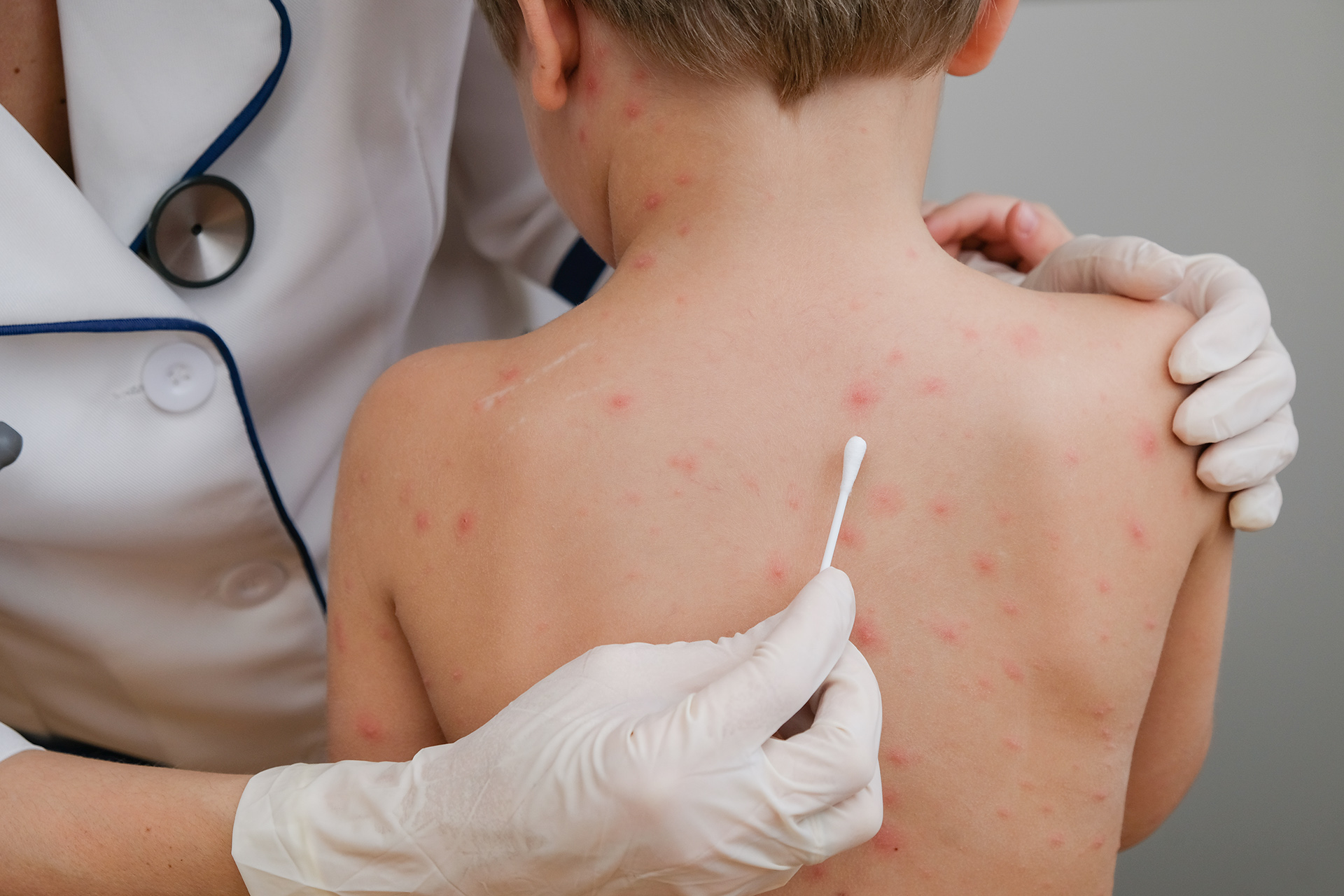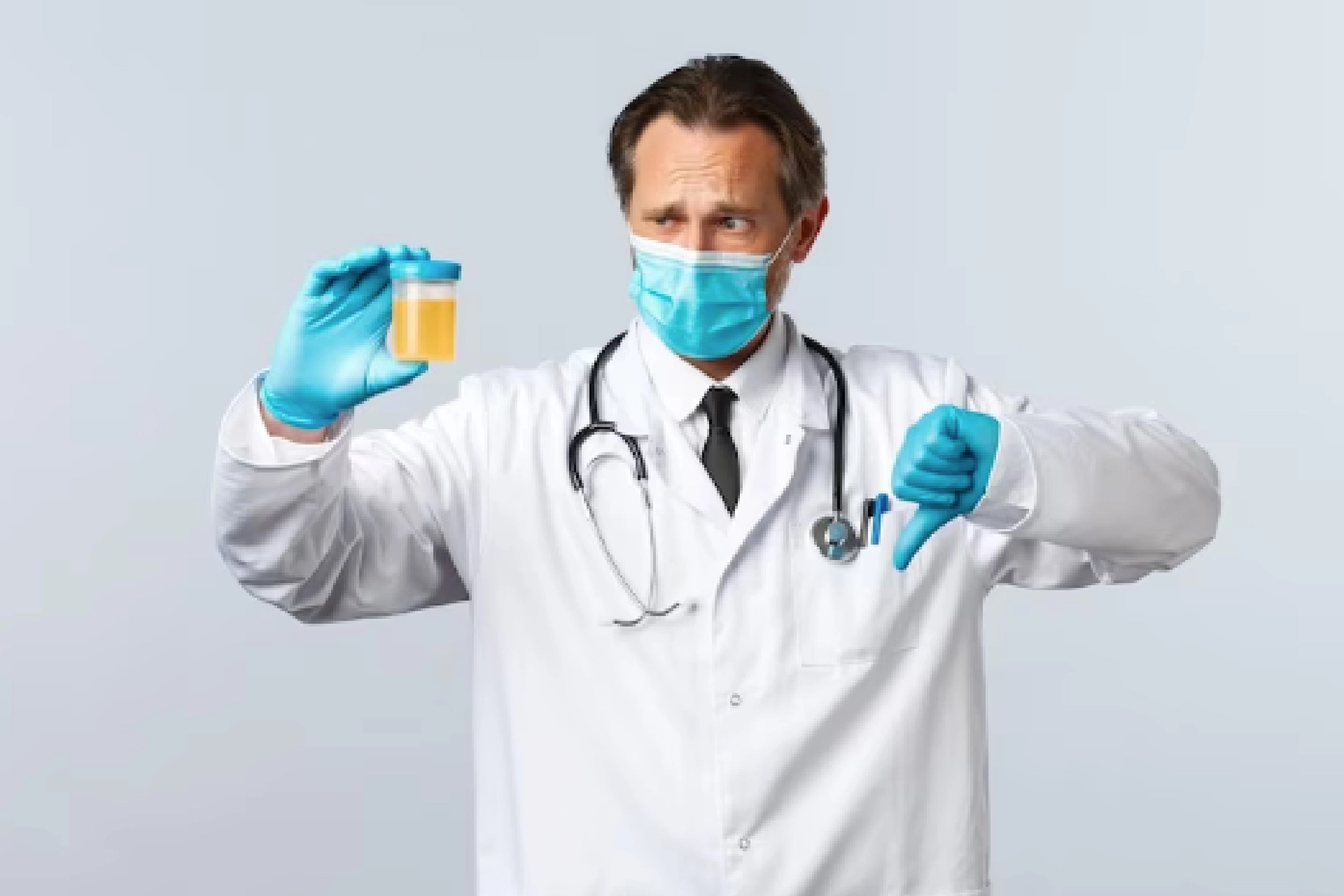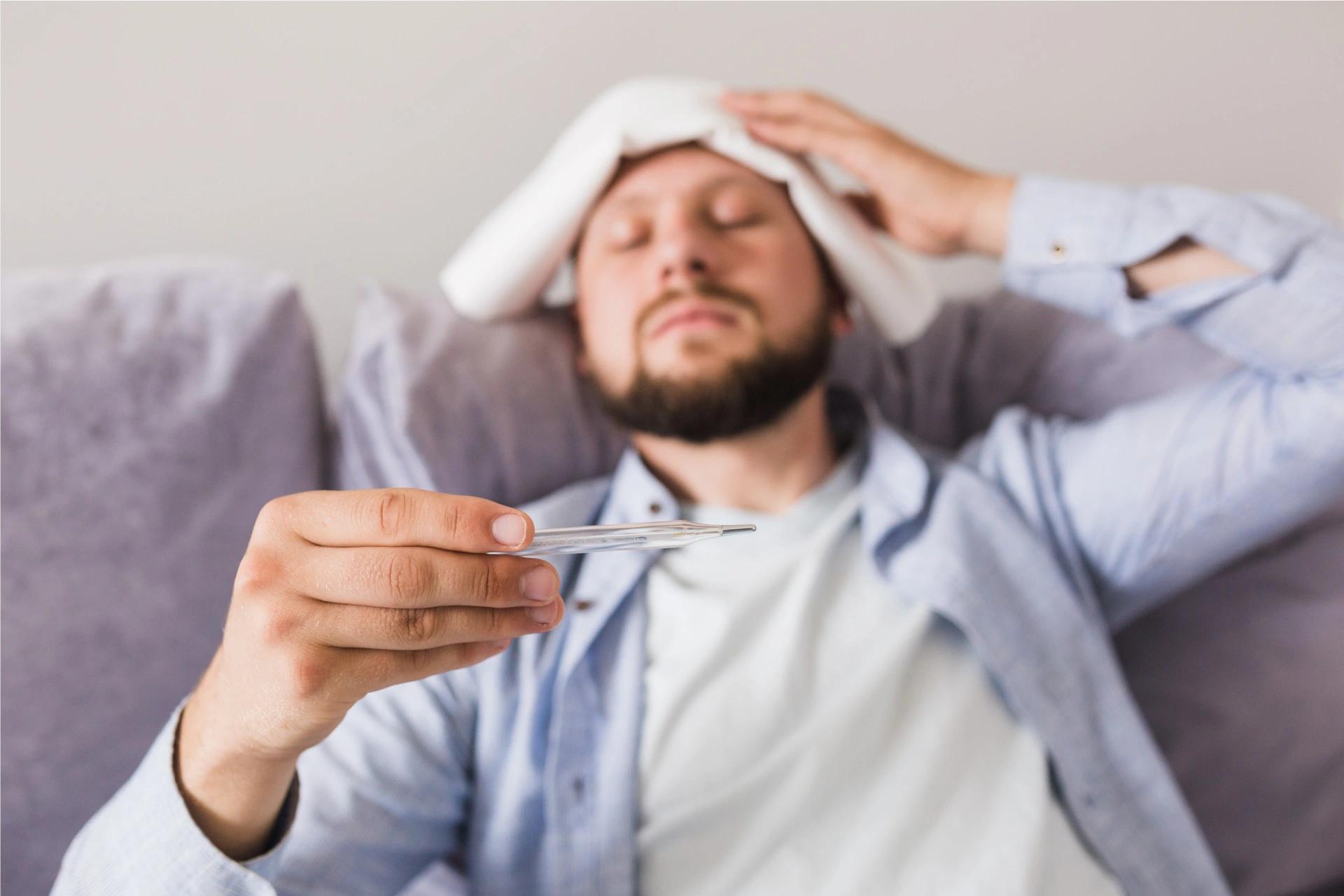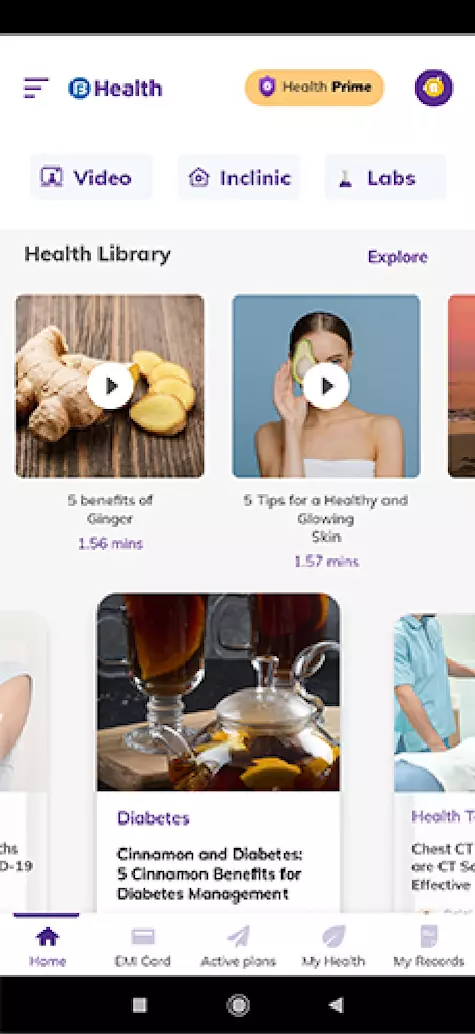Dermatologist | 6 min read
Chickenpox: Guide to its Causes, Treatment, and More!
Medically reviewed by
Table of Content
Key Takeaways
- The global disease burden of chickenpox is estimated at 140 million cases
- Itchy rashes and red fluid-filled blisters are common chickenpox symptoms
- The chickenpox vaccine is around 90% effective in preventing the infection
Chickenpox is caused by the varicella-zoster virus. It is an infection that causes an itchy skin rash along with small fluid-filled red blisters. The disease is highly contagious and is more common in children. Adults can also get it if they have never had it before or are not vaccinated against it. Varicella is not common today, thanks to the chickenpox vaccine. The infection goes away within several days as the blisters start leaking once they pop. They finally heal when they crust and scab over.
The annual global disease burden of chickenpox stands at an estimated 140 million cases. Of these, there are 4.2 million cases that lead to severe complications. Every 16 out of 1000 people get this disease in developed countries [1]. In rural southern India, this disease had an overall attack rate of 5.9%. Children under 5 years were more prone to it with an attack rate of 15.9% [2]. To protect yourself and your loved ones, read on to learn more about chickenpox symptoms and treatment.
Additional Read: Contact DermatitisChickenpox symptoms
Chickenpox symptoms usually appear between 10 and 21 days after exposure to the virus. A general feeling of illness is often the first symptom. After that, these symptoms usually appear:
- Fever
- Headache
- Tiredness
- Spots
- Fatigue
- Itchy rashes
- Crusts and scrabs
- Stomach ache
- Blotchy skin
- Loss of appetite
- Muscle or joint aches
- Small fluid-filled blisters
- Raised red or pink bumps
- Cold-like symptoms including cough and runny nose
Rashes first appear on the face, chest, and back and then spread over the entire body, even inside the eyelids, mouth or genital areas. Usually, it takes all of the rashes and blisters one week to develop into scabs and then heal.
Additional Read: Viral Fever
Chickenpox causes
The varicella-zoster virus causes chickenpox. You can contract it if you come in direct contact with an affected person. You are also at risk of the disease if the infected person coughs or sneezes and you inhale the air droplets. The chances of getting this disease increase if you never had this disease or have not taken the vaccine against it. In rare cases, people get chickenpox more than once. Those vaccinated against it are immune to it. If you still contract the disease after vaccination, the symptoms will be mild.
Almost 90% of chickenpox cases develop among young children. However, it can occur in adults too. So, your risk of getting this disease increases if you work in a school, child care facility, or live with children, particularly those under 2 years of age. Infants, newborns, pregnant women who never had chickenpox, people with weak immunity, smokers, and or those on steroid medications have a greater risk of chickenpox. The disease becomes highly contagious 1-2 days before the occurrence of rash until the blisters crust over.
Additional Read: Dengue FeverStages of chickenpox
There are three stages of based on how the rash appears. They are:
- Papules - Raised red or pink bumps that break out over several days
- Vesicles - Fluid-filled blisters that appear in about 1 day and leak after breaking
- Crusts and scabs - Broken blisters that take some days to heal completely
Chickenpox diagnosis
A doctor or nurse will usually diagnose a child or adult with chickenpox by looking at the skin and asking several questions about the symptoms. If you are not sure whether you had this disease previously or if you did not get vaccinated, a laboratory test may be done to determine if you had the condition in the past. Those who had previously encountered the virus develop immunity against it. If you are not sure, get tested for proper diagnosis.
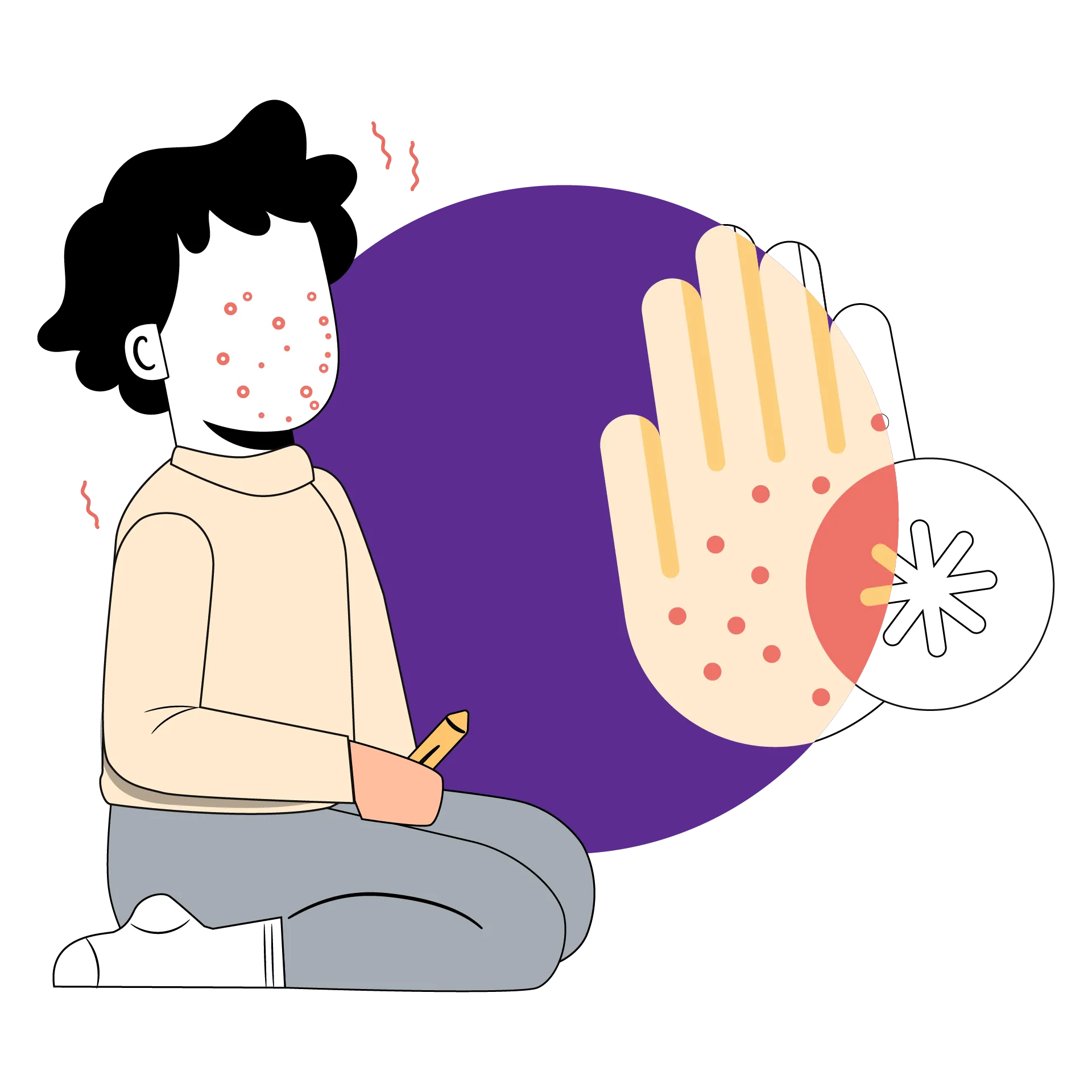 Additional Read: Peptic Ulcer
Additional Read: Peptic UlcerChickenpox treatment
Chickenpox fades within a week or two without any treatment. However, there is no cure available for this disease. But a chickenpox vaccine is about 90% effective and can prevent the disease. Other prevention measures include avoiding close contact with affected people, practicing isolation, not sharing objects, and disinfecting surfaces.
Some medicines and measures can reduce or alleviate symptoms. They include:
- Pain-relieving medications like can ease pain and high fever. Doctors may normally advise you to avoid aspirin and ibuprofen when you have it. It can help reduce pain associated with rashes and sores on your skin or mouth. It is safe for most people, even children over two months and pregnant women.
- Antiviral medications reduce the severity of chickenpox symptoms. These are most effective within 24 hours of the appearance of symptoms.
- Drink lots of water as dehydration is a complication caused by this disease.
- Reduce itching to reduce the risk of scarring. Cool baths, topical ointments, or oral Benadryl tablets can help.
- Having sugar-free popsicles when you have spots in the mouth can relieve symptoms of mouth soreness.
- Avoid sodas and sugary drinks, especially with sores in your mouth.
- Stay away from spicy, salty or hard foods that can worsen the soreness in your mouth.
Your doctor may give you an immunoglobin injection to prevent severe chickenpox if you have been exposed to someone who has chickenpox but hasn’t shown any symptoms yet. This treatment is usually considered if you’re:
- Pregnant
- Have HIV
- A smoker
- Having chemotherapy
- Taking steroid medication
Additional Read: Warts Types, Causes and Treatment
What are the possible complications of chickenpox?
Call your physician immediately if:
- The rash starts to spread to your eyes
- The rash is very red, sensitive, and warm (could be a sign of secondary bacterial infection)
- The rash is accompanied by shortness of breath or dizziness
Complications mostly affect:
- Infants
- Older adults
- Pregnant women
- Persons with a weak immune system
These groups are also more susceptible to the skin, joint, or bone bacterial infections and VZV pneumonia.
Pregnant women exposed to chickenpox may give birth to children with birth defects, such as:
- Poor growth
- Eye problems
- Small head size
- Intellectual disabilities
How can chickenpox be prevented?
The best way to prevent chickenpox is to get vaccinated. The chickenpox vaccine prevents the disease in 98 percent of people who take the two recommended doses.
Your child should get their first vaccination shot when they are 12 to 15 months old, followed by a booster between 4 to 6 years of age.
Older adults or children can receive catch-up doses if they haven’t been vaccinated or exposed. Older adults are more likely to have severe chickenpox, so people who haven’t received the shots may decide to get them later.
People who are unable to get their vaccination can try to avoid contact with infected individuals. Chickenpox cannot be identified simply by its blisters until it is too late and has already spread to others for days. Other prevention measures include practicing isolation, disinfecting surfaces and not sharing objects.
Chickenpox caused by the varicella-zoster virus and other skin problems need proper care and treatment to prevent complications. To ensure you take good care of your health, get doctor consultation on the Bajaj Finserv Health platform. Here, you can consult with specialists like dermatologists to get the right treatment at the right time.
References
- https://www.thelancet.com/journals/lancet/article/PIIS0140-6736(15)01190-3/fulltext#:~:text=global%20annual%20disease%20burden%20of,cases%20per%201000%20people%20annually.
- https://pubmed.ncbi.nlm.nih.gov/8170001/
Disclaimer
Please note that this article is solely meant for informational purposes and Bajaj Finserv Health Limited (“BFHL”) does not shoulder any responsibility of the views/advice/information expressed/given by the writer/reviewer/originator. This article should not be considered as a substitute for any medical advice, diagnosis or treatment. Always consult with your trusted physician/qualified healthcare professional to evaluate your medical condition. The above article has been reviewed by a qualified doctor and BFHL is not responsible for any damages for any information or services provided by any third party.
